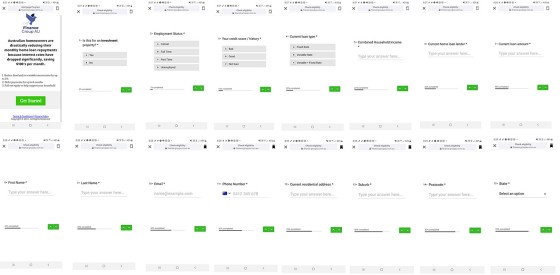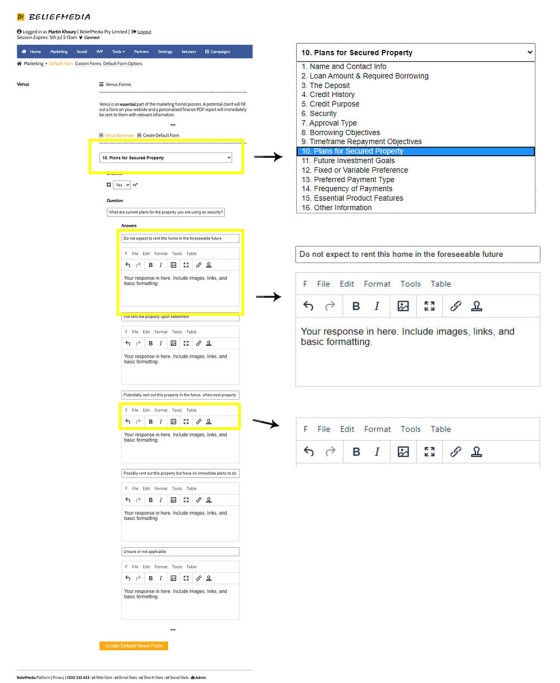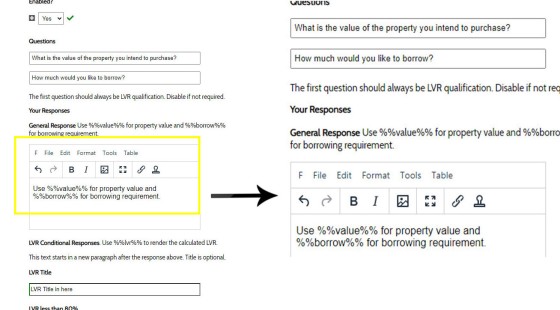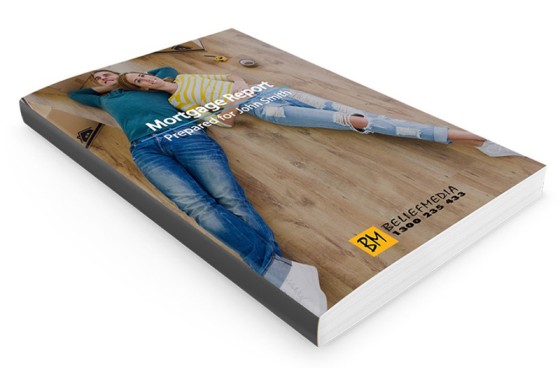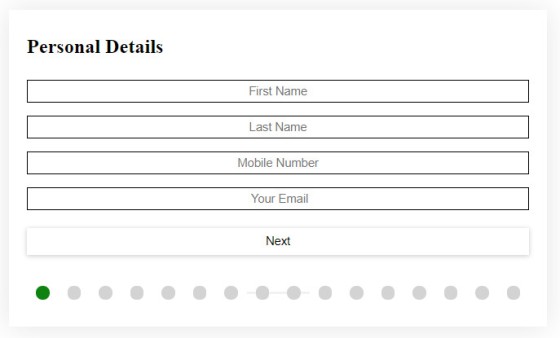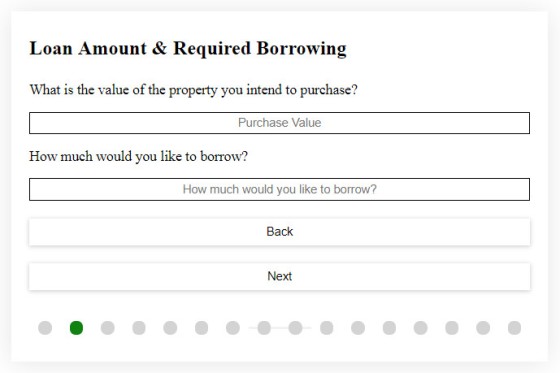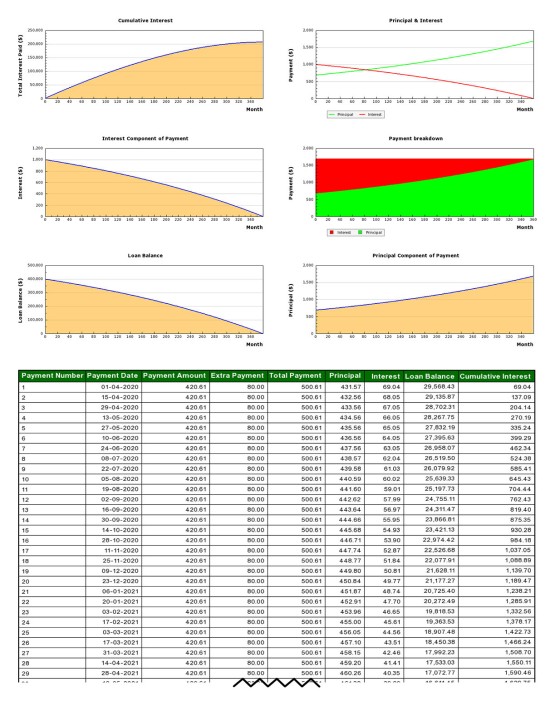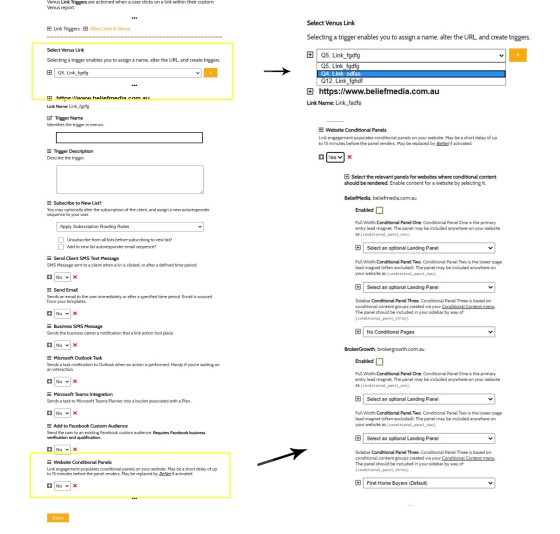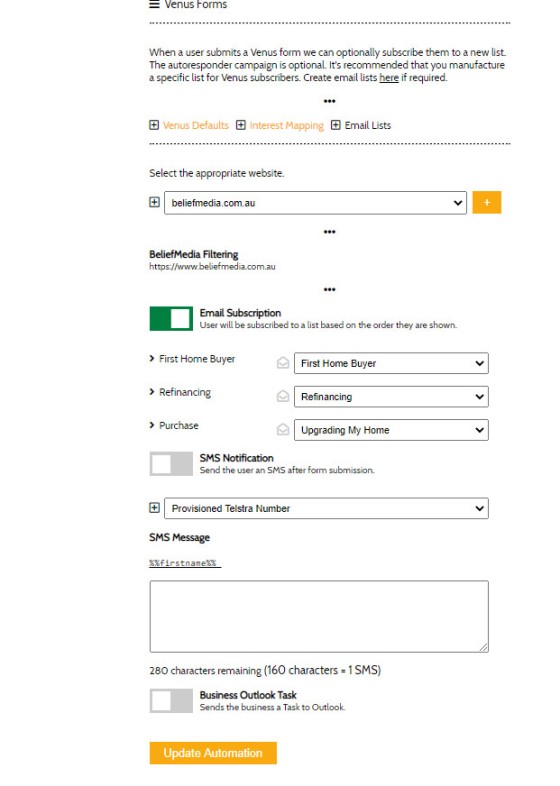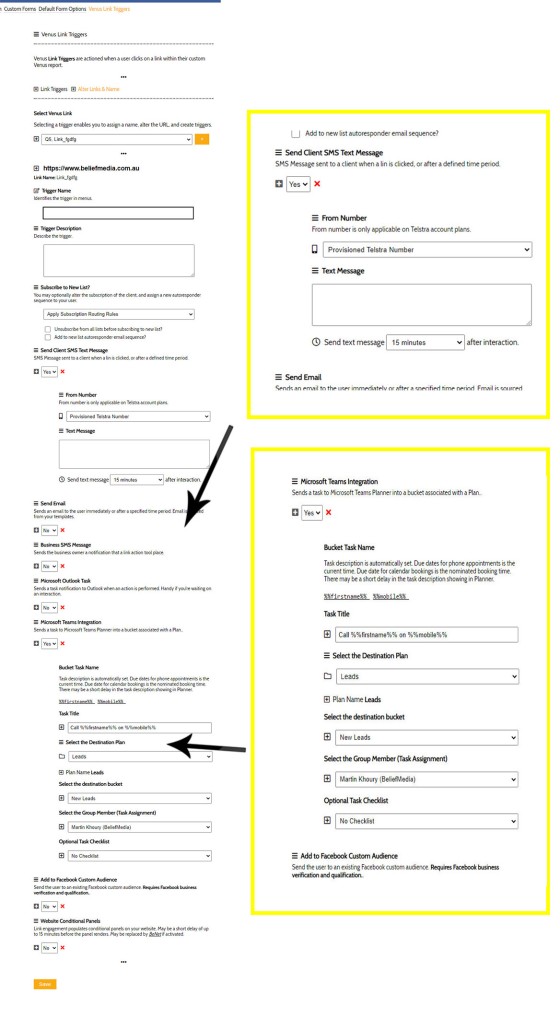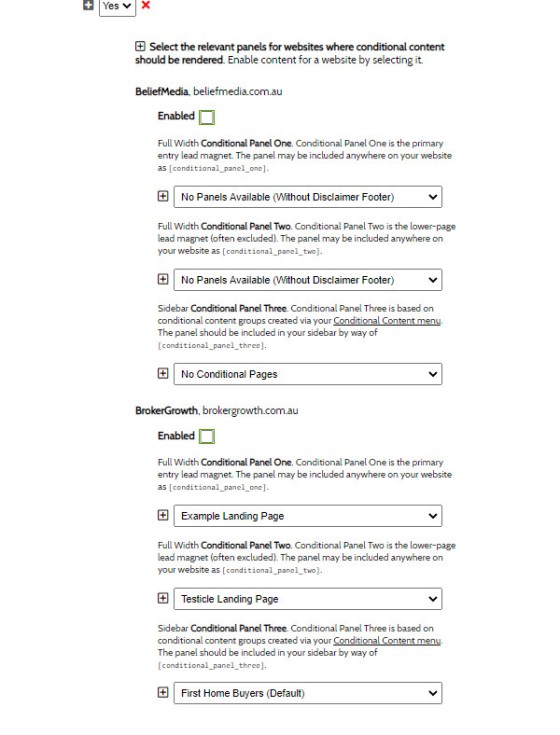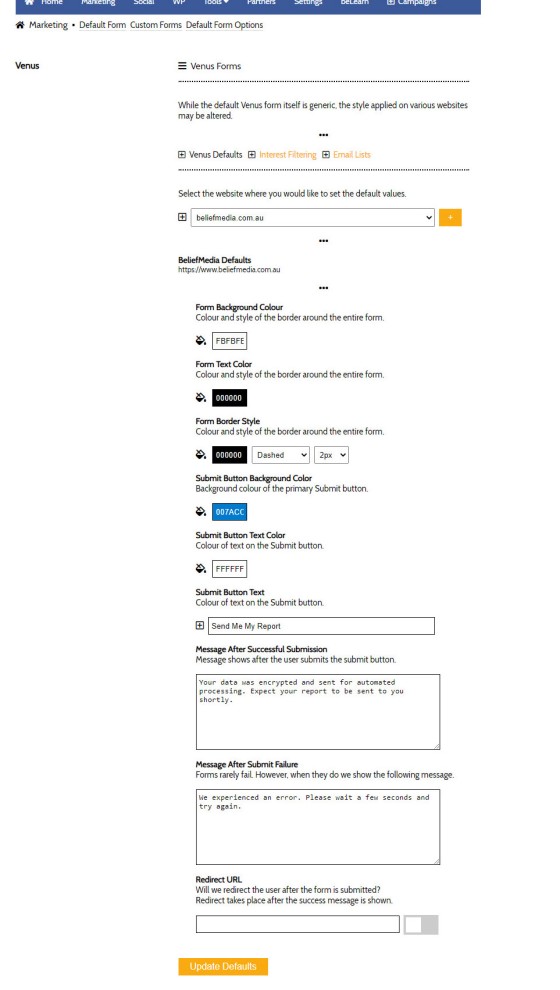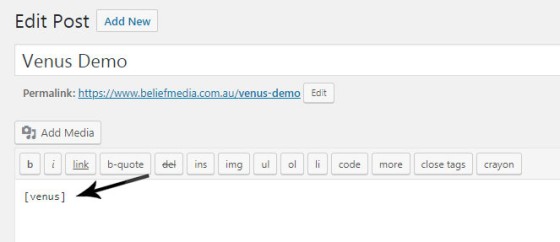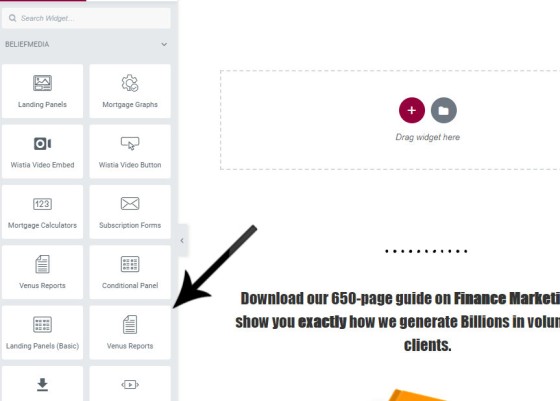In this article we introduce Yabber's Venus Report. The Venus Report is a tool we've long used to create user engagement within the marketing funnel, and provide various funnel-based course corrections. Additionally, Venus is used as a website (funnel entry-point) tool in a similar manner to lead magnets - it ingests a user into a very informed funnel exceptional.
Note: The newest version of the Venus report is introduced here. The new report includes more features and automation.
■ ■ ■
What is the Venus Report? The report is generated in response to a serious of finance-related questions on your website. When a user completes the questionnaire a PDF report will be generated and emailed to them specifically addressing those answers the visitor has provided. Used to qualify you as a broker of choice (not the other way around), the funnel tool feeds our website and BeNet AI-engine with the understanding of a client necessary to craft a more focused conditional website and funnel experience. From a client perspective, they'll immediately receive a PDF via email crafted in a manner that addresses their financial position.
If you read any further it's the 'conditional' sections that may confuse you a little. There are a number of articles we've published that detail conditional ideology a little further, but in essence, what it means is that your website and funnel will serve different content to different visitors based on either their actions or interactions. It is important to understand that the conditional features are truly an essential and core component of a real marketing funnel, and the reason you may be unfamiliar with how a conditional website works is because we're the only company in the industry to provide this high-converting game-changing experience (and it's why our brokers are guaranteed to get better online results).
The Venus Report we describe on this page is just one small part of the Yabber Suite  - the most powerful digital marketing and social media system ever made available to the mortgage industry.
- the most powerful digital marketing and social media system ever made available to the mortgage industry.
Never Qualify a Client Online
Qualifying a client online doesn't work. There's often a solution available to clients experiencing hardship, and if they're not immediately available, there's always your mandatory budgeting program (usually run by way of an autoresponder) or financial adviser partner that's available to provide assistance. In a 'customer first' world your own mantra should be supported by a real and unbridled passion for your vocational pursuit.. and at the very least, a commitment to your profession.
This discriminatory qualification process is one that really has no place on your website, and definitely not in your advertising or business (this is important to introduce because we want to describe what the Venus Report isn't). Consider the following sequence of questions that were asked after clicking on a mortgage broker Facebook advert.
Pictured: An advert linked to a landing page with 15 highly invasive qualification questions. This is typical of numerous and illegal lead generation websites that flood the market (making it more difficult for you to get results). Essentially, you're in competition with those that aren't even brokers, and those that aren't licenced to provide a financial service. We take screenshots of the ads, the landing pages, and the WHOIS data so we've able to identify the malfeasance. The practice is one that aggregators must address.
You should never ask for a keystroke or page-view in a conversion process that isn't absolutely required, and certainly don't try and jump the 'know and like' and straight to the 'trust' component as part of a cold advert. The follow-up campaign offers the opportunity to dig a little deeper into the needs of your leads (Venus provides this as a service). In the dodgy case shown above the questions are used as a means of 'qualification' (or exclusion), with the process used to negate any human element in the early qualification assessment (we submitted three entries from different phones; in the case where the LVR and serviceability were of high value a call was returned by a broker - the other two were ignored).
The Venus report is never introduced as part of a paid advert (the purpose of advertising is to get the client onto the phone, or into a program). The Venus report is introduced to a client in an email funnel program and its purpose is to have the client educate themselves based on those details they surrender (all optional), and the outcomes of the report is for the client to establish an understanding of concepts before a phone call, or to provide incentive for a phone call. The report is not a qualification tool.
Funnels are Designed to Qualify the Broker
With all this nonsense BS industry talk about qualifying a client many have forgotten what a true sales process is about: qualifying the broker (and you do this by educating, not selling).
The Venus Report is provided to our leads by way of an email link. The comprehensive compliance-based questionnaire is evaluated and the results are automatically compiled into a PDF and sent directly to your client. The document contains information based on the answers to your Venus questions. It’s not meant to be a definitive compliance resource by any standard... but it does give your lead early information to reflect on, and it clearly establishes you (or "qualifies you") as a professional of choice.
Consider the First Home Buyer with an unacceptable LVR or deposit. We won’t disqualify this extremely important group on the basis of a questionnaire or - as is often the case in the market - a fact-finding form. Instead, we provide our prospect with options, such as the “Bank of Mum and Dad” or introduce the guarantor (both discussed in your automated ‘Venus’ PDF). A user may qualify for borrowing on the basic of Government grants or similar – you know how it works. Either way, talking to our prospect if they’ve made a booking and providing post follow-up (regardless of their financial position) is imperative.
if you’re currently using conversion-blocking questions during your funnel journey (particularly if the questions are recklessly included on the same page as a calendar booking), ask yourself this question: is the “qualification” really necessary? The concept of qualification in the offline and online spaces are vastly different.
If you were to follow our advice, we tend to include a link to the questionnaires in our first or second email. Should the report be completed we'll use a conditional redirect to a second page crafted to escalate the funnel experience.
The Venus Report (and Creating Responses)
To summarise, the idea of a Venus Report is simple: you create a group of text responses to various questions, that form is made available on your website, and a potential client will optionally answer a simple step-by-step multiple-choice form. The ‘Mortgage Report’ will be created as a branded PDF and sent directly to the client, with the report predicated upon the answers within the form (in order words, the details included in the PDF are based on the question they've answered). The form is one of many dynamic tools we use in the marketing funnel process designed to set our broker apart from the mediocre and lacklustre experiences provided by your competitors. The onus is on you (most of the time), however, to create specific text responses to reflect your own scope of products, expertise, positioning, and brand.
The report provides the following functions:
- Provides the client with a genuine high-value tool upon which to retrieve information that may assist in their borrowing journey.
- Qualifies the broker by providing an exceptional product (it’s not uncommon for a client to print the report or forward it on).
- Provides the broker with a copy of the report to assist with telephone discussions.
- Answering the questions contributes towards our website escalation of commitment and conditional journey (as introduced shortly). Based on the information provided we can build a better profile of the client and adjust our conditional content as necessary.
- Provide an experience that makes you stand out in a crowd of online mediocrity.
Pictured: The Venus creation panel. A number of questions should be populated with your own responses. Your answers should provide graphs (via our image graph tool) and point your users to other resources externally or on your website. As discussed shortly these links are personalised and triggers may be created. The Venus questions should be completed by you. The questions should generally be in your own voice and reflect your own experience with each area. That said, we do plan on writing our own generic responses as a placeholder until brokers find the time to replace our content.
Pictured: The first question in the report provides LVR options. These values may be returned to the report with placeholders. The submitted values also enables the creation of a number of graphs.
Integrating Venus with Your Marketing Journey
As you’re now aware, there’s a massive difference between the sales funnel and a marketing funnel, with the former being a simple transactional experience while the latter is a journey (and we’re the only company in the finance space that provides a genuine and real marketing funnel to mortgage brokers). Venus contributes towards the journey in that it always remains an optional tool for your clients, but when it is used it escalates the marketing experience and feeds our conditional logic with more information to make the remainder of the journey more relevant (as introduced shortly we use the responses to alter content on your website to return relevant information).
Venus is simple in terms of how it works.
- User completes a report questionnaire on your website
- Details are submitted to our platform and a personalised PDF report is created. The report is emailed to the user via your integrated Microsoft email account. For privacy purposes, the data is fully encrypted during transport and on our server.
- The report is sent to the broker and optionally synced to OneDrive. A permanent record is made on Yabber.
Pictured: A website user fills out a form and a fully-customised and relevant booklet is returned. The logo shown on the bottom of the booklet is obviously replaced with your own logo; the entire booklet is completely white-labelled. The client’s name is printed on the cover creating more of a personal connection.
We normally send our client a link to the Venus form as part of the very first email in our early Sonata program for relevant email campaigns (as part of the Symphony marketing sequence)... but it is entirely optional. We introduce the ‘Mortgage Report’ to our client as “an entirely optional free tool that will provide significant value, and it is something that can use at any time”. Once again, any request in an email sequence that exceeds our trust score will be met with discontent and resistance. We never mandate that a passenger in our funnel journey surrender information other than that which is entirely necessary.
Where the Venus Report Should be Used
Usage of the ‘Mortgage Report’ is in three primary locations:
- On the front or any other page of your website. The tool adds value so shouldn’t be hidden.
- On a landing page. You will set up a specific page where the primary purpose is form completion – it’s a one-click exercise (used as part of the marketing funnel flow).
- Facebook Bot (pending Facebook approval). The bot solution we’ve manufactured to accompany this tool is essentially ‘plug-and-play’. Since the report is created on the backend the bot simply returns answers to our Platform for PDF creation.
- SMS Bot. The SMS question and answer bot is in development.
The Client Venus Form
Completion of any form by your client is easy. The unstyled form for question one is shown below (the form inherits the styling/fonts from your website). We'll have an example form on our example broker website when it's available.
Pictured: The first question. Your form will be styled in a manner to fit your website. Clicking ‘next’ returns a new question panel. The last question includes the ‘Submit and email Mortgage PDF’ button.
As your client moves through each question the green indicator will show progress. A back and next button is shown so a user may move freely between questions. The form looks nicer on a website! Designed around providing a pleasant customer experience, completion takes around 2-3 minutes.
Pictured: The second question is important. From this question we’re able to determine an approximate LVR so the report can return appropriate responses. Placeholders are used to return the values entered into the form and the calculated LVR.
All text fields are mandatory although most questions require only a multiple choice selection.
Venus Graphs
On the basis of the second question we’re able to build graphs for inclusion based on various loan scenarios. The most basic is a simple graph to demonstrate a payment schedule, and another to show how monthly additional payments reduce the interest payable over the life of the loan. We tend to build in as many graphs as we can to Venus reports to provide supporting visual evidence of your responses.
Pictured: Various graphs made available via the LoanCalc API for inclusion in your Venus reports. The API is available for any application, including the inclusion of graphs on your website.
The Mortgage Graphing API is introduced in an article titled "Using BeliefMedia’s Simple Mortgage Graph API & Elementor Widget".
Venus-Driven Conditional Website Content
A real marketing funnel experience - as opposed to the generic one-dimensional landing page transactional experience usually provided to brokers by "Facebook Marketers" – requires that we escalate the commitment of a user by way of conditional website content. This process starts when a user first visits your website and we identify browsing behaviour by way of their page visits. We then escalate our own understanding when a user downloads a product, clicks on any link in an email or on your website, or subscribes to a service (such as a webinar). We use this interaction to serve more relevant and unseen content to your website in a way that encourages more on-page activity, and ultimately results in a conversion far higher than the typical and rather pedestrian 'static' experience.
Our 'Venus’ provides us with an exceptional understanding of our client by way of the questions they have answered, and we subsequently feed our BeNet system with enormous amounts of information necessary to provide website relevance for that specific user. Knowing our client’s exact credit purpose, history, intent and objectives provides a very clear path in automatically returning relevance back to them by way of well-crafted website material.
Of course, conditional content is just one small part of our ‘escalation of commitment’ strategy, but it’s one of the more significant aspects of your digital presence that’ll drive online transactions.
The Venus report is one of the more definitive sources of client data because they answer specific questions relating to their circumstances. Question 5, in particular, provides us with relatively precise knowledge of their primary interest. Links within the report also provides valuable insight into a user’s specific interests.
Venus Link Tracking & Triggers
As with any of your marketing assets, unless you track all engagement and provide trigger-based responses the interaction is a wasted opportunity. All links in the Venus report are created for the user that created it. This makes a range of triggers available that’ll further dig them deeper into your funnel and personalise the experience. Triggers include actions such as SMS text messages, emails, task creation, and the creation of Facebook Custom audiences. As with all our triggers the actions itself – such as a simple link click – we can force certain content associated with a specific action to be shown on your website. Best of all, creation of these triggers is super-simple. This amazing 6-figure marketing experience now doesn’t cost you 6-figures!
As with all of our web-based forms, submission of the form adds to a cookie on our users’ websites for continued targeting and conditional content (this includes registering incoming links from the report).
We provide two kinds of Venus triggers: the general options and specific link triggers. The general triggers are usually based on the response to question 5 (‘Credit Purchase’) while the trigger links are based on a user clicking on a specific link in the report. The trigger links are evaluated first before we revert back to the general options.
Pictured: The trigger panel that applies to each link within the Venus document. A number of actions can be applied to user links within a PDF Venus report such as SMS messages, emails, email lists changes, tasks, and so on. The most significant feature is the ability to alter content immediately on your website directly (as pictured on the right) based on clicking on a certain link within the Venus Report. The feature is discussed more in our section on ‘Your Website’.
Pictured: Based on specific questions answered within the Venus report we can optionally subscribe the user to an appropriate mailing list. The same panel provides an option to send a text message to a user once the report is completed. These actions take place on the basis of form completion; triggers are actioned on the basis of links clicked within the actual Venus document.
Pictured: Conditional Venus Triggers. Based on links clicked on in the report – created specifically for the user that answered the questions – we may action a large number of triggers, such as email, SMS, task creation, and email segregation. This is a high-level feature you might leave until you have a good program in place. All triggers are recorded in various tables, graphs, and an RSS feed may be used for use in Outlook.
Venus Conditional Panels
One of the most valuable marketing assets our internal custom links provide is the opportunity to render custom panels on your website based on their response. We know what the interest type is for the click that took place so we modify primary panels on the website to serve a visitor's needs. This is in addition to other conditional panels you may have created based on a simple interest type (First Home Buyer, Investor, etc.).
Pictured: Venus conditional panels (as part of the Trigger functionality). Based on the link clicked in a Venus report we can alter your website to reflect appropriate information that is more likely to convert. Changes upon clicking a link are created in real time. This is seriously high-level marketing. See our section on Conditional Content in the next chapter on ‘Your Website’ for a broader understanding.
Venus Form Styling Options
While the form generally inherits styles from your website, you may specifically define the primary colours, success and fail messages, and redirect URL. The redirect URL is particularly important because it presents further conversion opportunities off the tail end of declared intent. The form will soon be modified to provide conditional redirects similar to those provided by our basic subscription forms.
Pictured: Form styling options. The redirect URL is particularly important because it presents further conversion opportunities off the tail end of declared intent. The form will soon be modified to provide conditional redirects similar to those provided by our basic subscription form (as described in the next chapter).
Inclusion into Your Website
To return the form into your website you simply have to add the shortcode of [venus] into a WordPress post or page. If using our Elementor plugin (which is all of those that use our broker website), having the report rendered on your website is a simple drag-and-drop exercise.
To return forms other than the default form created within your WordPress website, simply add the form ID as a shortcode attribute. For example, the form we use for our own (basic) client websites SEO audits we use the shortcode of [venus id=”seo”]. At the time of writing we have no immediate plans to introduce the additional reports (when they are available they’ll be focused on property).
Pictured: Including a Venus report on your website with shortcode. If using our turnkey website the Venus report is available as a drag-and-drop Elementor builder option.
Conclusion
If the latter and more advanced features of the Venus Report have confused you a little it might be best to focus on the basic feature: it returns a booklet to your client as part of the funnel process. It's an extremely high-performing feature that contributes to the success of our brokers, and it's simple to use. If the purpose of a funnel is to qualify you as the business of choice (and it is), then a Venus Report goes a long way to achieving this end.
We expect to create default ‘one-click’ answers for the form but we do prefer that brokers make an attempt to provide a unique experience. The fact there’s 92 time-consuming individual questions was the reason we decided to create generic responses... although, as you know, we vigorously oppose generic or templated material in any marketing campaign (despite providing enormous amounts of it).
More advanced reporting strategies might be applied in the property and real-estate markets where large amounts of information might be returned (sourcing information from third party systems and our extensive internal data). If you’re a property client we’ll introduce these tools to you and work alongside your team to ensure you have an amazing 'Property Report' experience integrated into your website.
Mortgage brokers should keep the generated PDF report on record as part of a client’s compliance documentation.
The underlying tech that builds the report is obviously designed in-house by Belief. As such, we’re able to react to requests for changes and additions rather quickly.



